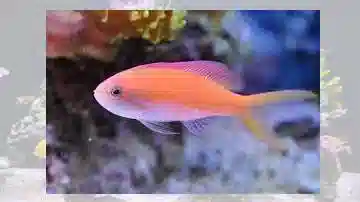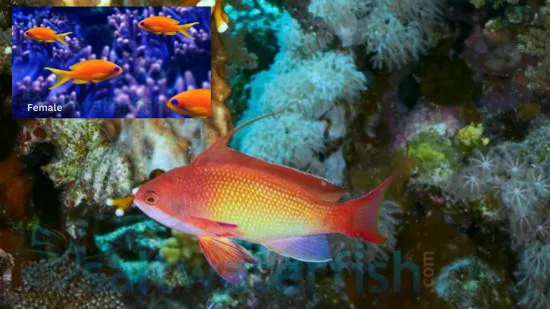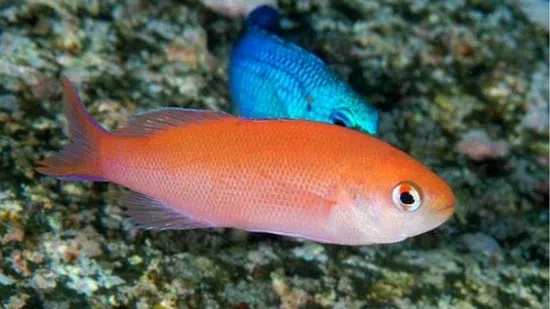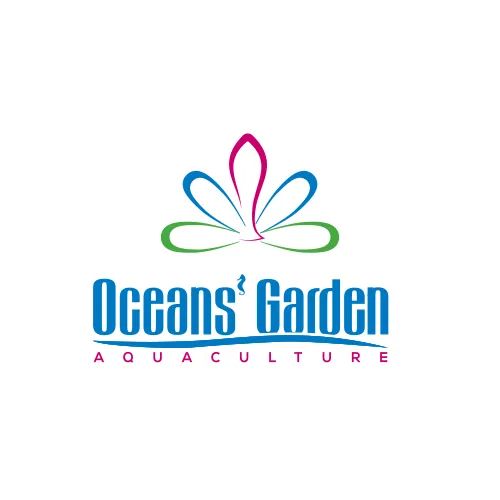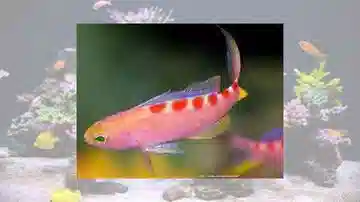Flavoguttatus Anthias
Pyronotanthias flavoguttatus
(2 Reviews)

Flavoguttatus Anthias
Pyronotanthias flavoguttatus
(2 Reviews)
Flavoguttatus Anthias
Size: < 2"
$107.99
Free Shipping
With
$199.00
or more in Marine Life.
More details...
Flavoguttatus Anthias Care Facts
| Care Level: | Expert |
|---|---|
| Temperament: | Peaceful |
| Diet: | Carnivore |
| Reef Safe: | Yes |
| Minimum Tank Size: | 70 gallons |
| Max Size: | 5 inches |
Flavoguttatus Anthias (Pyronotanthias flavoguttatus): A Captivating Addition to Your Marine Aquarium
The Flavoguttatus Anthias, scientifically known as Pyronotanthias flavoguttatus, is a captivating and vibrant addition to saltwater marine aquariums, known for its striking appearance and lively behavior. This educational and formal product description provides a comprehensive guide to keeping this species in your home aquarium.
Habitat: Exploring the Indo-Pacific Wonders
The Flavoguttatus Anthias originates from the Indo-Pacific region, including the waters around Indonesia, the Philippines, and the Great Barrier Reef. In the wild, they are often found in coral-rich areas, particularly in the reef's upper slopes and outer lagoons.
Reef Compatibility: A Reef-Safe Marvel
Flavoguttatus Anthias are considered reef-safe, making them an excellent choice for reef aquarium enthusiasts. They do not typically harm corals or other invertebrates and can coexist peacefully with reef inhabitants.
Size and Lifespan: Moderately Sized Wonders
These Anthias species are moderate, with adult individuals typically reaching lengths of 4-5 inches. In captivity, they have a lifespan of up to 5 years when provided with proper care.
Diet in Captivity: Culinary Preferences of Flavoguttatus Anthias
Flavoguttatus Anthias are carnivorous and should be fed a varied diet that includes high-quality marine-based pellets, frozen or live foods such as brine shrimp, mysis shrimp, and finely chopped seafood. Offering a diverse diet will help maintain their health and vibrant coloration.
Aquaculture and Availability: Supporting Sustainable Practices
Flavoguttatus Anthias are commonly aquacultured, which ensures a sustainable source for hobbyists. This availability makes them a responsible choice for marine aquarium enthusiasts.
Compatibility with Other Fish and Invertebrates: Promoting Peaceful Coexistence
These Anthias are generally peaceful but can be territorial toward their own species. It is recommended to keep one male with multiple females to prevent aggression. They can cohabitate with other peaceful fish species and are generally not aggressive towards invertebrates.
Sexual Dimorphism: Males, Females, and Vibrant Colors
Males and females of Flavoguttatus Anthias exhibit sexual dimorphism. Males tend to be larger and display more vibrant colors, while females are smaller and have more subdued coloration.
Juvenile to Adult Coloration Changes: A Visual Symphony
Juvenile Flavoguttatus Anthias often have a more subdued coloration, with a yellowish body and subtle pink or lavender markings. As they mature, males develop vibrant pink, orange, and yellow hues with distinctive markings on their dorsal fins.
Temperament: Active and Friendly Behavior
These Anthias are known for their active and friendly behavior. They are often seen swimming in open water, making them a delightful addition to your aquarium.
Tank Requirements: Crafting a Haven for Flavoguttatus Anthias
Minimum Aquarium Size: A tank with a minimum capacity of 70 gallons is recommended for a small group of Flavoguttatus Anthias.
Water Conditions:
- pH: Maintain a stable pH level within the range of 8.1 to 8.4 to ensure proper metabolic function.
- Salinity: Keep the salinity level consistent at 1.024 - 1.026 to mimic natural seawater conditions.
- Water Temperature: Keep the water temperature between 75°F to 80°F (24°C to 27°C).
- Water Flow: Provide moderate water flow to simulate their natural habitat and ensure proper oxygenation.
Other Common Names: Recognizing the Flavoguttatus Anthias
Flavoguttatus Anthias may be known by other common names, including the Yellow-spotted Anthias and Orange-spotted Pseudanthias.
Compatible Tank Mates: Building a Harmonious Community
Clownfish (Amphiprion spp.): Peaceful and visually appealing, Clownfish make excellent companions.
Royal Gramma (Gramma loreto): Known for their vibrant purple and yellow coloration, these fish are generally peaceful.
Firefish Goby (Nemateleotris spp.): These small, elegant fish add an interesting dynamic to your aquarium.
Cleaner Shrimp (Lysmata amboinensis): These shrimp can help with parasite control and are compatible with Flavoguttatus Anthias.
Yellow Coris Wrasse (Halichoeres chrysus): A colorful and active fish species that complements the Anthias.
Why Choose Flavoguttatus Anthias from Saltwaterfish.com: Quality and Sustainability
When you purchase Flavoguttatus Anthias from Saltwaterfish.com, you can expect:
- Healthy Specimens: Each fish is carefully selected and handled to ensure their health and well-being.
- Sustainability: Many of the Anthias available on Saltwaterfish.com are aquacultured, supporting responsible and sustainable practices.
- Expertise: Saltwaterfish.com has a team of experts who can provide guidance and support to help you create a thriving aquarium environment for your Flavoguttatus Anthias.
In Conclusion: Marvels of Color and Life
In conclusion, the Flavoguttatus Anthias is a captivating and reef-safe addition to your saltwater marine aquarium. Their striking coloration, lively behavior, and compatibility with other marine species make them a fantastic choice for experienced and novice hobbyists. When purchased from Saltwaterfish.com, you can trust in the quality and sustainability of your new aquatic companions.
Reviewed by: Anna Richardson on Sept. 26, 2023
This fish is pretty but shy and difficult to feed and keep alive. It died after just a few days. It kept hiding and did not come out for feeding. Saltwater co took care of the problem and refunded the amount I'd paid
Reviewed by: Esther Murphy on July 25, 2017


